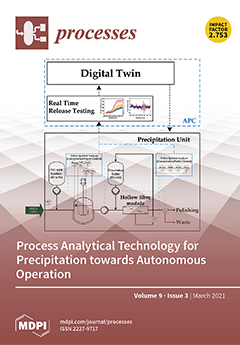Airborne particulate matter (PM) pollution often occurs in the wintertime in northern China, posing a potential threat to human health. To date, there are limited studies about the metals and inorganic ions to link source apportionments and health risk assessments in the different size-segregated PM samples. In this study, our samples were collected by a high-volume air sampler from 26 December 2018 to 11 January 2019 in a high population residential area (Beijing). Water-soluble inorganic ions, metal elements in the different size-segregated PM samples were determined for health risk assessments by inhalation of PM. During the sampling period in Beijing, the average concentrations of PM
1.1 and PM
1.1–2.0 were 39.67 ± 10.66 μg m
−3 and 32.25 ± 6.78 μg m
−3. Distinct distribution profiles characterized the different elements. The markers of coal combustion Pb, As, and Se had >52% of their mass concentration in PM
1.1. The average mass ratios of (NO
3− + NO
2−)/SO
42−, Cl
−/Na
+, Cl
−/K
+, and Cl
−/(NO
3− + NO
2−) were 1.68, 6.58, 6.18, and 0.57, which showed that coal combustion and vehicle emissions were the main anthropogenic sources of PM in Beijing in winter. PM
1.1 was the major contributor of Pb, Cd, and As for carcinogenic risks (CR) and hazard quotient (HQ). It was indicated that PM
1.1 is more harmful than coarse PM. The toxic elements of Cr (VI) (1.12 × 10
−6), V (0.69 × 10
−6), and As (0.41 × 10
−6) caused higher CR for children than Ni, Cd, Co, and Pb. Meanwhile, Pb (35.30 × 10
−6) and Ni (21.07 × 10
−6) caused higher CR for adults than As, Cr (VI), V, Co, and Cd, especially PM
1.1. This study provides detailed composition data and the first report on human health in a high population residential area in Beijing.
Full article





